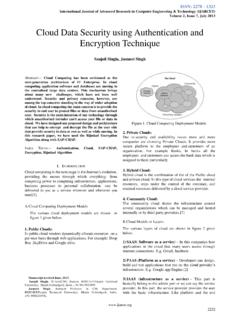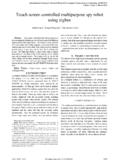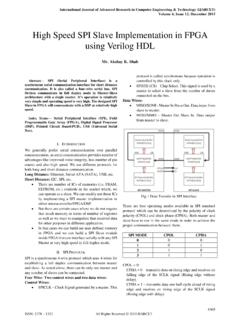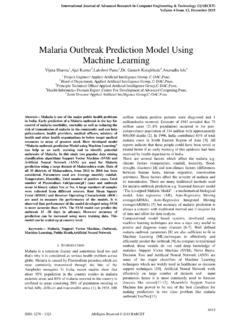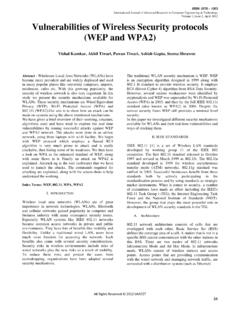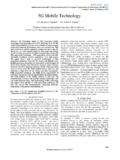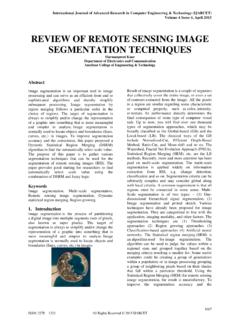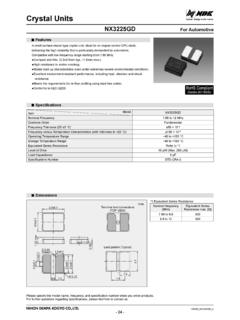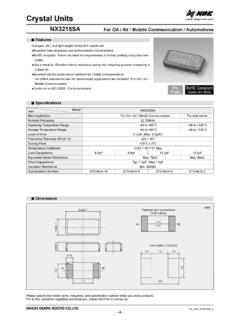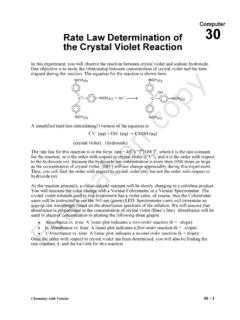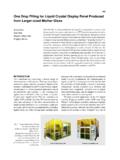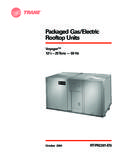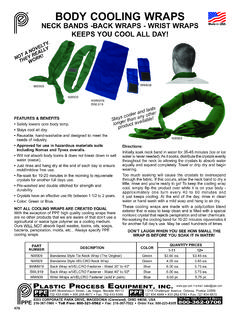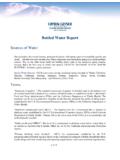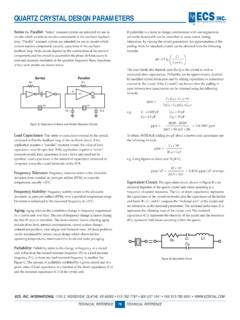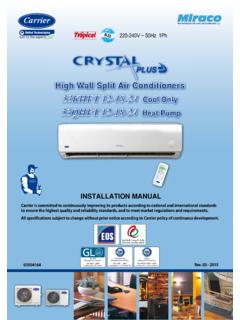Transcription of Study of Liquid Crystal Polymer Based Flexible …
1 International Journal of Advanced Research in Computer Engineering & Technology (IJARCET) Volume 5 Issue 3, March 2016 501 ISSN: 2278 1323 All Rights Reserved 2016 IJARCET Study of Liquid Crystal Polymer Based Flexible Antenna Dipal S Sindha1, Brijesh Shah2, Falguni Raval3 Charotar University of Science and Technology,Changa-388421 Abstract: We live in the world where technology getting advanced day by day. Today in the field of RF Microwave and Wireless Communication, Communication equipments are coming with new features like small in size, flexibility,higher data rate etc.
2 The objective of this paper is introduction to Flexible technology and brief of Liquid Crystal Polymer which is one of best substrate for fabricating Flexible antenna. Keywords: Flexible , Liquid Crystal Polymer (LCP) I. INTRODUCTION Flexible antennas are becoming more popular as they are robust light weight antennas which are with stand mechanical strain up to certain extent. The Flexible material can be wrapped around any arbitrary shape to give require results car, robots, human body etc[1]. Flexible electronics in which assembling of electronic circuits by mounting electronic devices on Flexible plastic substrates, such as polyimide, Polymer , PEEK or transparent conductive polyester film.
3 Fig 1: Scope of Flexible electronics Fig 1 shows scope of Flexible electronics, as it used in various application that is shown in Fig 1. Flexible antennas are robust and lightweight, which are withstand mechanical strain upto certain extent. Fig 2: Flexible antenna images[2] As shown in Fig 2. one can bent for twist Flexible antenna although results could not be changed. II. TYPES OF Flexible ANTENNA There are various types of Flexible antenna Based on material like Polymer Based antenna, microfluidic antenna, textile antenna, carbon nanotube antenna etc.
4 First that is Polymer Based antenna are used as light weight replacement of metal. Although certain Polymer and Polymer composites are electrically or can be made electrically conductive, low conductivities have generally limited their uses as a metal replacement in application requiring electrical conductivity. Liquid Crystal Polymer (LCP) has low dielectric constant and low loss tangent[3] ,widely used in making Flexible antenna. Being a Flexible material LCP can be rolled up, bend and twisted.
5 Second one is Microfluidic antenna consists of fluid metal alloy injected into microfluidic channels comprising a silicon elastomer. The conducting element of this kind of antenna is fluid. The mechanical properties and the shape of antenna are defined by elastomeric channels, which are composed of polydimethylsiloxane (PDMS). Stretching, bending, rolling and twisting of proposed antenna is possible. International Journal of Advanced Research in Computer Engineering & Technology (IJARCET) Volume 5 Issue 3, March 2016 502 ISSN: 2278 1323 All Rights Reserved 2016 IJARCET Third one is Textile antenna which can be used in body worn communication system.
6 This type of antenna can be integrated into clothing. This type of antenna widely used in medical application. The last one is Carbon nanotube antenna. Carbon nanotubes (CNTs)are a new material for Flexible electronics, due to their high intrinsic carrier mobility, conductivity and mechanical fabrication techniques use CNTs in form of thread, ribbons and sheets[5]. CNT threads are used to produce wire frame antenna and CNT ribbons/sheets to produce planner and wave guide antenna.
7 The feature of CNT Based antenna with feature like Flexible , lightweight and conformal alternatives in army antenna. III. BASICS OF Liquid Crystal Polymer In 1890 Otto Lehmann first identified the Liquid Crystal phase of matter. In 1968 Commercialisation gathered pace when George Heilmeier developed the first Liquid Crystal application prototype. In 1970s subsequent global research efforts led to Liquid Crystal application replacing conventional display devices . In 1980s-1990s this included portable PCs, mobile phones and electronic toys.
8 LCPs are fairly promising thermoplastic organic material, which are composed of molecules with rigid and Flexible monomeric units, as shown in Fig rigid monomer imparts high temperature capability and high mechanical properties, while the Flexible part contributes to process ability. It is special structure that provide them with some unique properties between the crystalline and amorphous polymers, such as minimal and consistent dimensional stability variation (< ), low coefficient of hygroscopic expansion, high rigidity and strength , high heat resistance, very low moisture absorption ( ) and environmental friendliness etc.
9 Fig 3: The rigid and Flexible monomeric units and molecule of Liquid Crystal Polymer . LCP exhibits excellent electrical properties up to mm-wave frequencies, including stable dielectric constant and low loss tangent up to 110 GHz. The material presently used as high frequency substrate are either expensive or show unsatisfactory performance. The industry standard substrate materials Flame-Retardant class4 (FR-4), although inexpensive, present inferiorRF (PTFE) Based laminates are another commonly used materials for high frequency application because of their good physical properties.
10 However the effort and material require in their fabrication make them expensive and the Coefficient of Thermal Expansion (CTE) of these materials are quite high [1]. Moreover Low Temperature Co-fired Ceramic (LTCC) laminates have recently become popular as microwave substrates due to attractive electrical characteristic, compact multilayer circuit integration and good package hermeticity, but the cost is comparatively high and they also bring some drawback like high lamination temperature, high density problem, increased design time, higher tooling cost as well as performance issues[4].
